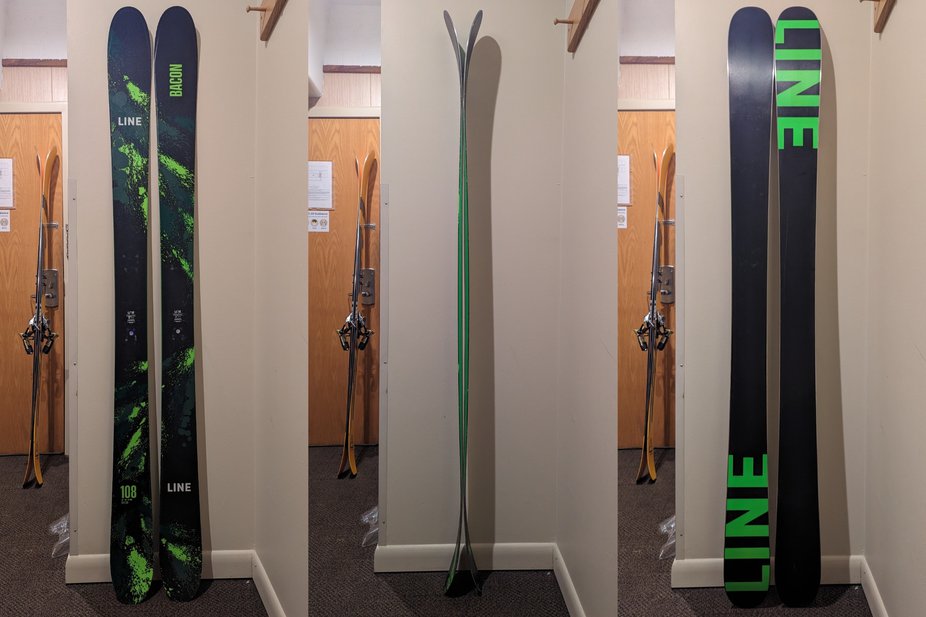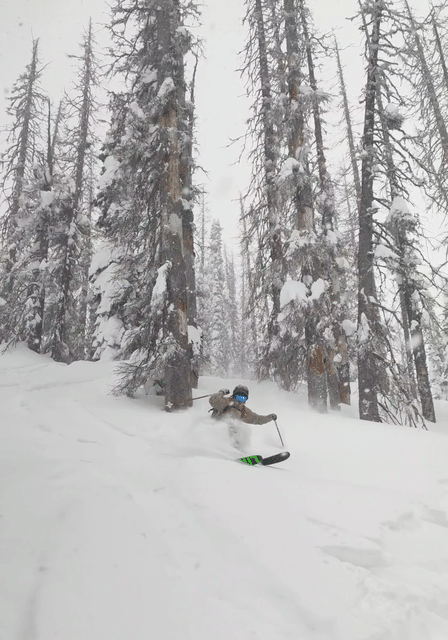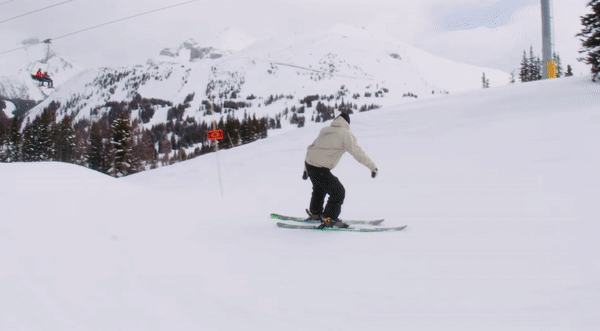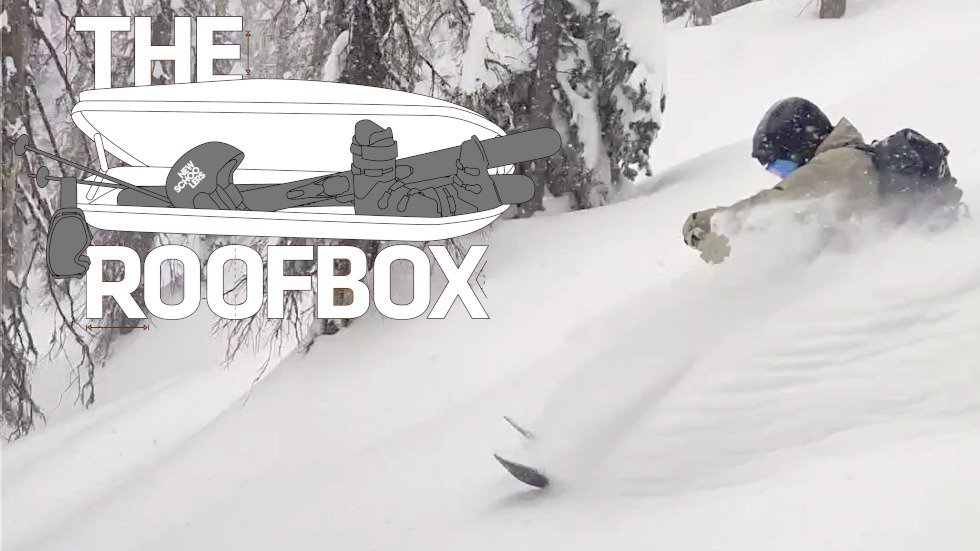Ski: Line Bacon 108
Reviewer height/weight: 5’9, 145lbs
Ski weights (per ski):
Length skied: 184 & 178
Actual length (with straight tape): 184.1
Dimensions:
Mounted: -2.5 cm from true center
Bindings: Tyrolia Attack 17
Locations: Saas-Fee, Wolf Creek, Alta
Conditions skied: Park, crud, fresh snow, deep blower pow, groomers
Days Skied: 13
_
The Line Sir Francis Bacon is dead, long live the Line Bacon... Or something like that. This is the first year since I started skiing more seriously that Line hasn’t had the ‘Sir Francis Bacon’ moniker in their lineup. But being realistic, most people just called them the Bacon anyway, and so essentially the brand has followed suit. In all other regards, the Bacon 108 is a continuation of the philosophy of the various Sir Francis Bacon skis. It has a similar footprint and shaping ideology to the skis in that line, with some new construction tweaks.
_
Shape/Flex/Construction:
In terms of footprint, the new Bacon 108 isn’t vastly different from the outgoing 107mm Sir Francis Bacon. The underfoot is to all intents and purposes, identical, and they have similar taper profiles. The convex tip and tail of the old ski are gone, but that’s the biggest change. The newer ski has a smoother tip shape and rocker profile with more rocker splay and slightly less defined tips and tails.

Where things do start to change is in the construction. You get some seriously chunky vertical sidewalls underfoot, and Line’s new Thin Tip 2.0 tech in the tip and tail, where essentially, the topsheet is bonded directly to the base for a stronger plastic-to-plastic bond, and even less material up there. It does actually work too, at least from a swingweight standpoint because these skis feel a lot lighter in the air than they are.
_
On snow:
Groomers:
The Bacon is a bit of a Jekyll & Hyde situation on groomers, in fact, that will be a theme for much of this review. When the snow is good, they’re fantastic groomer skis. As with most Line skis, they have a super intuitive feeling turn shape that is relatively happy straight lining but will crank when thrown on edge. They are stiffer than the previous Bacon, but not enough that to me, it made much difference here. The radius is slightly longer too, but these are still overall a quick, turny shape. ~17m turn radius is plenty to get low and turn hard, especially in a ski this easy to bend. So much of the turn shape of most Line skis comes from flexing the ski as opposed to the initial shape that to me, these feel very similar to the previous model on hardpack. They grip is slightly better thanks to the vertical sidewall, so there is a slight upgrade there, but don't expect a massively different feel overall.
As with the previous model, the shape is great but the soft flex lets you down when conditions get icy or rough. They are a bit damper, which helps smooth out some small bumps but ultimately, if you hit ice or chunky snow, you’re not going to have a great time.
_

I got to ski these on some epic days at Wolf Creek and Alta
Pow Days:
Again, we have a bit of a two-faceted situation here. The Bacon shape floats great, just as well as its predecessor, despite losing the convex tip/tail and narrowing down a bit. They are happy being thrown sideways and soft enough that there is little to no resistance to doing so. The new shape actually has more rocker splay, so they bounce more naturally out of pow, so to me, they feel a little more playful as a result. On landings, they definitely have more stability thanks to a larger sweet spot but they haven’t lost any of the buttery playful feel that the Sir Francis Bacon was known for.
However, like the previous ski, they do lack power. When the pow gets tracked out and heavy, the Bacon can struggle a bit more. The slightly narrower tips deflect less in crud than the previous model, and you can kind of roll with it to a point, popping off tracks, etc but when things get really chunky and cruddy, you’re going for a ride. These still aren’t the ski to blast through anything, you kind of just have to point them and hope. I have generally been skiing stiffer skis lately, so I probably noticed this more than I would have when I reviewed the SFB, but compared to something like the Dynastar MFree 108, these struggle with heavy snow and poor conditions. I actually ended up skiing the Blade Optic 114 far more than the Bacon as a result, because the snow in Europe is heavy and rarely ‘bottomless’.
_
Backcountry Proper:
The new Bacon is realistically more of a resort/sidecountry tool than an out-and-out backcountry ski. It’s on the heavy side for touring at north of 2200g per ski. And since it’s a bit soft for mixed conditions or steeps, that you inevitably encounter when getting properly into the backcountry terrain then these are probably not the first choice. Sure, throw a CAST or Daymaker on them for occasional use but they aren’t the ideal ski for extended or adventurous missions.
_
Park/Jibbing:
Where the Bacon comes into its own is as a versatile park/all mountain option, or as a park/backcountry jump ski. They are pretty much as ‘surfy’ as skis should get. They feel super loose on rails for surface swaps, soft for easy butters on, and are generally the very definition of playful. The same was true of the Sir Francis Bacon, but unfortunately, those had the life expectancy of your average park rat when they visit the actual ‘hood’.

I did actually ski and film a fair amount in the park with these. Unfortunately, I then lost the phone with all the shots on so I'm grasping for shots on this one
_
The new Bacon 108 is built like a park ski (exactly the same as the new Chronics in fact) and the early signs are good. That makes these a very realistic one-ski quiver for someone out west who rides a good amount of park, but also wants to get after it in the trees and pow. In fact for that, these are arguably the best big brand option out there, going up against the Vishnu Wide as a soft, loose park ski that does well in the soft stuff.
The stability is actually pretty good too thanks to a decent amount of camber underfoot and probably ends up being in the ballpark of the K2 Reckoner 102 or Revolt 104 despite being a softer ski overall. The Thin Tip 2.0 works pretty well too because despite gaining quite a lot of weight, the swingweight of the new Bacon 108 really does not feel heavy, though it is heavier than the previous ski. The ski itself is definitely no featherweight but that heft is concentrated around the binding area, where you don’t really feel it so much (in either the positive or negative regard). They are definitely more stable on jumps than the old ski, in fact, they are good at most things park related, as long as you like a wide platform, which I do. I liked them a lot from rails, to jumps to buttering and booling around. They are much more well-balanced ski overall than the SFB they replace.
_
A note on sizing:
The slightly increased stiffness, and increased weight do throw up a sizing question for me and the average-height guys in general. I’m 5’9 and around 145 lbs depending on recent beer consumption. I rode the 184cm Sir Francis Bacon exclusively because the size down was too soft to be usable. On the new Bacon, I mostly rode the 184 too, but as a park ski, I found myself preferring the 178. It was stable enough to still hit jumps and the decreased swingweight was compelling enough for me that I think if I were buying them to ride mostly park, which is where I enjoyed the 108 best, I’d probably go 178cm. For me, the 178 has about the same stability as the old 184, while the new 184 does feel a bit more substantial.
_
Durability:
Probably the biggest plus of the new Bacon is that it feels a LOT more solid than the old SFB. Both the convex tips and tails and the heavily angled sidewalls of the old ski caused a bunch of delam issues. I’ve had no issues with either the new Bacons or Chronics, which share almost identical construction.
_
Comparisons:
This is where things get a bit difficult because you could compare the Bacon to any number of skis. I’ve picked three class leaders though and will try and answer any questions about other skis in the comments.
Dynastar MFree 108 (182cm):
The MFree is another pivoty 108mm ski but it’s a LOT stiffer than the Bacon overall. The recommended mount is also far more set back but i rode them within 2cm or so of each other so feel good making a relevant comparison. The MFree just has a lot more power to deal with mixed conditions, and at the same time, is easier to pivot than the Bacon. The Bacon felt marginally more comfortable to me tracking straight lines but otherwise the MFree is just a more compelling freeride tool. But the Bacon feels more balanced in the air and it’s a much more playful ski. I also find the Bacon a little more engaging and fun day to day.
Bent 110:
The Bent 110 is probably public enemy number 1 for the Bacon 108 and they do have the edge in some ways, particularly on weight and stability. For me, the Bent 110 is slightly less stable than the MFree 108 but significantly more so than the Bacon. And the Bent 110 is more than 400g per ski lighter so I know which I’d rather tour on. That said, the Bacon is much smoother feeling, and lightyears more engaging on groomers. And in terms of sizing, it’s the 188 Bent 110 that’s the close comparison to the 184 Bacon which means the actual swingweight difference is minimized. For more pow, I’d likely go Bent 110, but for lots of park and especially if you hit rails… Bacon.
Vishnu Wide:
It’s been a while since I compared a ski to the Wides, which I skied in 183 but the Bacon 108 definitely sits in that space. The Bacon is a bit more stable, and much more engaging on groomed. It also goes sideways more naturally with the tapered/pinned shape. It has a bit less rockered length and it’s slightly stiffer, so the Wide is easier to butter, but both are very much on the buttery end of the spectrum. The Wide is lighter, but the Bacon has a similar swingweight. 183 Wide VS 184 Bacon and I’d probably still take the Wide as a pure park ski, Bacon for 50/50.
Chronic 101:
The elephant in the room, so to speak, when it comes to the Bacon 108 is the new Line Chronic 101. I like both skis very much, but if you take soft snow out of the equation (and I primarily rode the Bacon as a park ski), then they end up fairly similar propositions. The Chronic is marginally stiffer and definitely more ‘grippy’ as opposed to the surfier Bacon, but it has a slightly tighter turn radius, so on hardpack, they feel very similar. The 179 Chronic 101 basically feels like a 184 Bacon 108 without the pointy bits at the ends. 101 is just a smidge quicker on rails and the swingweight is lower. If we’re getting down to the nitty gritty, I preferred the Chronic for 5050s because the shape felt easier to ‘lock’ but the Bacon was smoother for surface swaps and butters. However, if you ski pow a lot, the Bacon is your only choice.
_
Conclusion:
I tend to keep an eye on other review channels when I know they have the skis I’m skiing. One thing I’ve seen with the Bacon 108 is a tendency to overstate the differences between this new ski and the old Sir Francis Bacon. Yes, there are differences, the main one is that the new Bacon 108 is heavier. But that weight is aimed at durability improvements rather than performance changes and to my eye at least, that has worked. Yeah, it’s slightly stiffer, and yeah, the radius is a smidge longer but the fundamental character of the Bacon 108 is the same as its predecessor. It’s still super loose and playful, and it still isn’t much good in choppy snow. It’s still just as at home in the park as it is outside of it, perhaps even more so. It still cranks turns better than it should, still butters with nary more than a twitch of the ankles and hopefully, now it holds up too. In short, it’s still very much a Line Bacon ski. Sir Francis no longer but the legacy lives on.


Comments